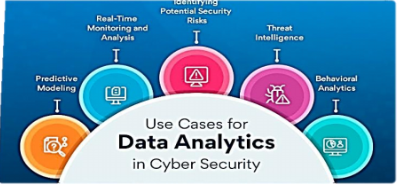Fusion of Data Analysis and Cyber Security
DOI:
https://doi.org/10.21276/jccci.2025.v1.i2.3Keywords:
Data analytics, cybersecurity, threat identification, predictive analytics, machine learning, big data platforms, artificial intelligence (AI), Internet of Things (IoT), and risk management.Abstract
The fusion of data analytics in cybersecurity has been a game-changer in how to counter ever more sophisticated cyber-attacks in the digital era. Organisations are adopting sophisticated data-driven techniques in support of their security posture with cyber attackers, on the other hand, adapting new techniques in evading traditional defences. They can pick them out and give useful details to identify the threats, answer incidents, and deal with danger through data assessment, trends, outliers, as well as weak points in mass data sets. This method permits organisations to predict and avert coordinated attacks and thereby transform the approach to cybersecurity from reactive to action-based. The most important applications of data analytics in cyber security are the descriptive analytics application for understanding what had occurred in previous security breaches, diagnostic analytics to understand why and how a breach was accomplished, and predictive analytics to predict potential attacks from history. Prescriptive analytics provides optimum courses of action in prevention or response to cyber-attacks. Facilitating live analysis are technologies such as machine learning algorithms, big data platforms, and Security Information and Event Management (SIEM) systems to enable these mechanisms. While there are advantages, security and data analytics cannot be easily integrated due to the volume and type of data, unavailability of specialists who are conversant in both fields as well as ethics of privacy and information gathering. Further, constantly changing threats therefore require frequent adjustment of analytics models. Some of the newer developments in this area include applying big data platforms to the handling of difficult data sets; applying artificial intelligence (AI) to self-learning threat detection; and developing proactive defence systems through deception technologies. Leveraging these developments, companies can strengthen their defences against attackers who exploit weaknesses in distributed systems such as the Internet of Things (IoT). Data analytics and cybersecurity in this report indicate a twin role undertaken between them towards cyber environment protection against continuously emerging cyber threats.
Downloads

Downloads
Published
Versions
- 2025-07-28 (2)
- 2025-07-26 (1)
Issue
Section
License
Copyright (c) 2025 Journal of Cognitive Computing and Cybernetic Innovations

This work is licensed under a Creative Commons Attribution-NonCommercial 4.0 International License.





